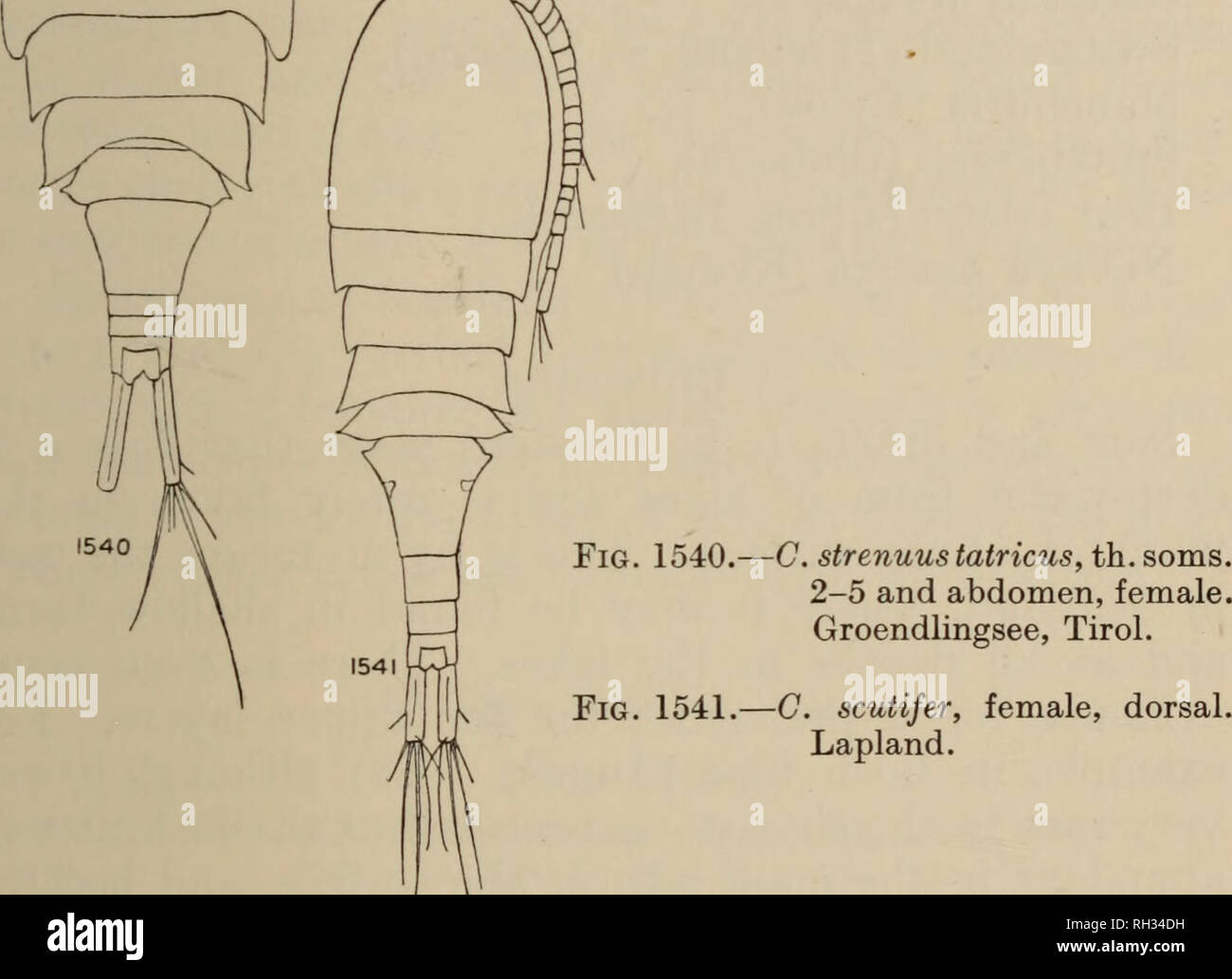. British fresh-water Copepoda. --. Copepoda; Crustacea. CYCLOPS STRENUUS ABYSSORUM. 167 recognized (Fig. 1540), and by the proportional lengths of rami and setae, which can only be expressed statistically. I have, by the kindness of Dr. Pesta, been able to examine specimens of " C. strenuus " from several localities in the eastern Alps, and find all to be of this form. Measurements are given in table (p. 163). Geographically and ecologically limited as this form. I appears to be, it is certainly right that it should be distinguished; but there are some advantages in regarding it a

Image details
Contributor:
Library Book Collection / Alamy Stock PhotoImage ID:
RH34DHFile size:
7.1 MB (147.2 KB Compressed download)Releases:
Model - no | Property - noDo I need a release?Dimensions:
1855 x 1347 px | 31.4 x 22.8 cm | 12.4 x 9 inches | 150dpiMore information:
This image is a public domain image, which means either that copyright has expired in the image or the copyright holder has waived their copyright. Alamy charges you a fee for access to the high resolution copy of the image.
This image could have imperfections as it’s either historical or reportage.
. British fresh-water Copepoda. --. Copepoda; Crustacea. CYCLOPS STRENUUS ABYSSORUM. 167 recognized (Fig. 1540), and by the proportional lengths of rami and setae, which can only be expressed statistically. I have, by the kindness of Dr. Pesta, been able to examine specimens of " C. strenuus " from several localities in the eastern Alps, and find all to be of this form. Measurements are given in table (p. 163). Geographically and ecologically limited as this form. I appears to be, it is certainly right that it should be distinguished; but there are some advantages in regarding it as a subspecies of C. strenuus rather than as a separate species. Distribution in Britain. Throughout Scotland, and in the Lake District, this is the common form of C. strenuus. It is found not only in the plankton of most lakes, but also in small tarns at all elevations. In Jura it was found in one small elevated tarn, and in one only of the lakes. It seems to be associated in this country with water of low pH, and to be confined to what may be called the. Please note that these images are extracted from scanned page images that may have been digitally enhanced for readability - coloration and appearance of these illustrations may not perfectly resemble the original work.. Gurney, Robert. London : Ray Society